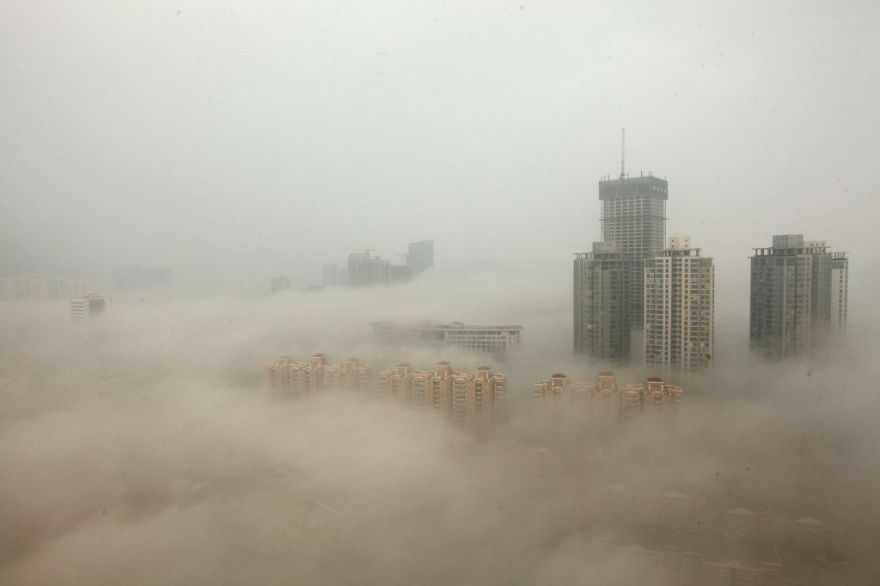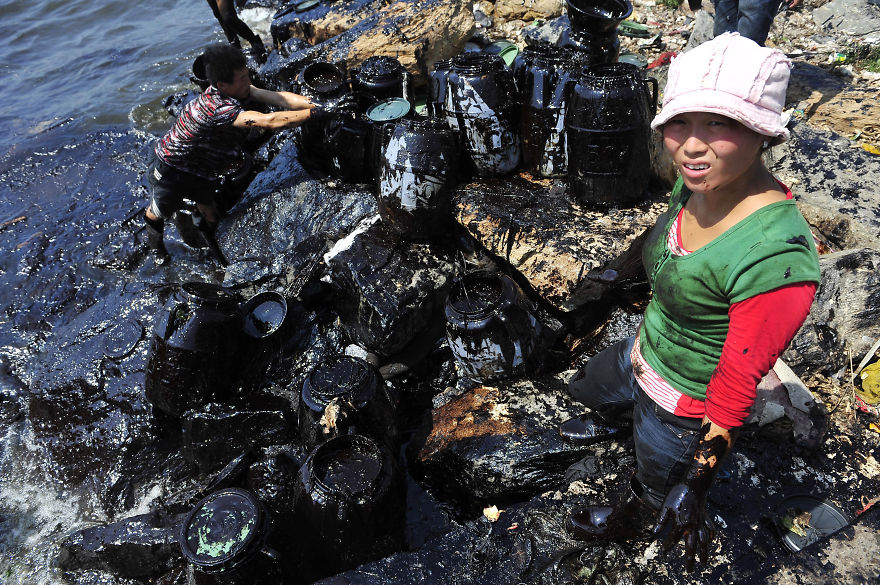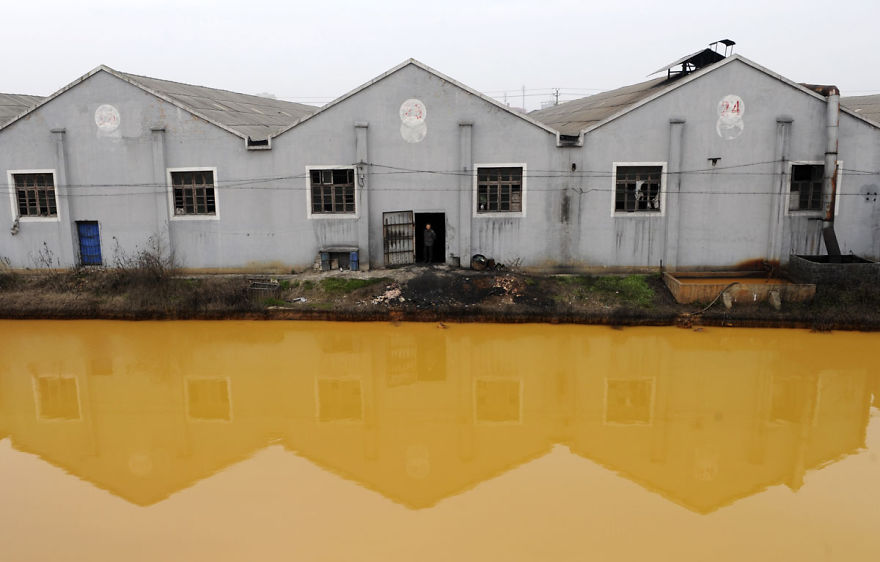Every quasi-mushroom cloud has a silver lining. That was our cynical conclusion yesterday when we noticed that as part of China's tragic Tianjin mega-explosion, thousands of channel-stuffed cars parked at the Chinese port which likely would have quietly rusted away into the epic nothingness of China's unprecedented excess capacity of pretty much everything, were destroyed, thereby one-time reducing at least some of the gargantuan slack in the Chinese economy.
Which got us thinking: if natural disasters, either accidental or man made, are a tangential blessing to the Chinese economy, why stop at the Tianjin explosion? What about the biggest bogeyman facing China today - its environmental catastrophe, demonstrated best by the impenetrable, carciongenic and toxic smog resulting from the accelerated industrialization of the country, and which the citizens of Beijing, Shanghai, and increasingly more cities, have to breathe in day after day?
It has hardly been a secret that the unprecedented level of pollutants in the Chinese air would impair life expectancy and lead to extensive health problems, but even we were surprised to find out the quantification of China's air problem: according to one study, an average of 4,000 people a day are killed in China, as a result of the dense smog.
According to Bloomberg, "deaths related to the main pollutant, tiny particles known as PM2.5s that can trigger heart attacks, strokes, lung cancer and asthma, total 1.6 million a year, or 17 percent of China’s mortality level, according to the study by Berkeley Earth, an independent research group funded largely by educational grants. It was published Thursday in the online peer-reviewed journal PLOS One from the Public Library of Science."
“When I was last in Beijing, pollution was at the hazardous level: Every hour of exposure reduced my life expectancy by 20 minutes,” Richard Muller, scientific director of Berkeley Earth and a co-author of the paper, said in an e-mail. “It’s as if every man, woman and child smoked 1.5 cigarettes each hour.”
To be sure, Chinese authorities have acknowledged the air pollution situation after heavy smog enveloped swathes of the nation including Beijing and Shanghai in recent years. As a result, they’ve adopted air quality standards, introduced monitoring stations and cleaner standards for transportation fuel while shutting coal plants and moving factories out of cities. So far, however, all the proactive measures seem to have little result.
“The PM2.5 concentrations far exceed standards, endangering people’s health, though air quality has improved in the first half in the 358 Chinese cities,” said Dong Liansai, climate and energy campaigner at Greenpeace East Asia.
As Bloomberg further reports, Muller and co-author Robert Rohde analyzed four months of hourly data for some 1,500 ground stations in China. They then employed a model used by the World Health Organization to calculate the disease burden.
They found that 92 percent of China’s population experienced at least 120 hours of unhealthy air during the April 5, 2014, to Aug. 5, 2015 study period. For 38 percent of the population, the average pollution level across the entire four-month period was deemed unhealthy.
Here one may wonder whether the US DOE funded Berkley researchers were pursuing some specific, anti-coal agenda, as confirmed by the following assessment:
"the Berkeley Earth researchers also examined where the pollutants were detected and concluded that the sources of PM2.5s matching those for sulfur dioxide suggests most of the pollution comes from burning coal.“Sources of pollution are widespread but are particularly intense in a northeast corridor that extends from near Shanghai to north of Beijing,” the researchers wrote. “Extensive pollution is not surprising since particulate matter can remain airborne for days to weeks and travel thousands of kilometers.”China gets about 64 percent of its primary energy from coal, according to National Energy Administration data. It’s closing the dirtiest plants while still planning new, cleaner ones. The country is expected to shut 60 gigawatts of plants from 2016 to 2020 though three times as many plants are scheduled to be built using newer technology, according to Sophie Lu, a Bloomberg New Energy finance analyst in Beijing.To cut reliance on coal, the nation also wants to derive 20 percent of its energy from renewables and nuclear by 2030, almost double the current share.
But whether it is due to coal or not, is irrelevant: the truth is that China does have a problem with preserving its environment and keeping the quality of its air. Some examples shown previously:

Pollution from a factory in Yutian, 100km east of Beijing



Smog In Beijing

Fishermen clean up oil at an oil spill site near Dalian Port, Liaoning province

Heavily Polluted River In Jiaxing, Zhejiang

Journalist takes a sample of red polluted water in the Jianhe River in Luoyang

Heavily Polluted River
* * *
Which got us thinking: if the Tianjin explosion unclogged the car channel stuffing problem, if only for a few days, then perhaps China pollution serves a different, more ulterior purpose.
Recall that the US social security trust fund is going broke faster by the day since Americans refuse to die at the age they were expected to die when social security was first conceived 80 years ago. As a result, because of progress one of the biggest entitlement systems in the US is on the verga of default.
When it comes to pension and retirement benefits, the US, with its 330 million people, is nothing compared to China with its 1.2 billion and rising. So what is the best way to "resolve" this problem? Perhaps by introducing an external agent, one that culls the population at a pace of 4000 (and rising rapidly) per day.
Because while the number of deaths resulting from China's smog is astounding, something else very surprising is how little progress has been achieved in the battle to clean up China's air in the past several years, especially since any long-lasting clean up would also lead to a permanent reduction in the industrial output of China's manufacturing heartland and lead to, drumroll, a violent drop in GDP, a drop which as the current episode demonstrates, would lead to a collapse in the Chinese stock market, an even greater pop in the housing and credit bubble, and far more violent devaluation of the local currency with the attendant negative global economic impact. Not to mention lead to an extension in the longevity of China's population, which the local actuaries have just one word for: crisis.
Which is why despite all the rhetoric, and all the "reform" don't expect China's pollution problem to get better. In fact, expect it to deteriorate substantially because in the immortal words of that other famous communist, "When there's a person, there's a problem. When there's no person, there's no problem" and China's pollution is taking care of 4000 problem each and every day...
Credit to Zero Hedge


No comments:
Post a Comment